Are you looking to boost your local beer sales? Whether you’re running a bar, managing a store, or simply curious about the best ways to increase demand, understanding the factors influencing beer sales and implementing effective strategies can make a significant difference. From exploring consumer preferences and leveraging seasonal promotions to building brand awareness through events, there are numerous approaches to consider. In this article, we’ll delve into the key factors shaping beer sales, explore where you can find beer near you, and uncover the most effective strategies to drive success. By staying informed and adapting to changing trends, you can position yourself as a leader in the ever-evolving world of beer sales.
Key Takeaways
- Understand Pricing Dynamics: Balance budget-friendly and premium options to cater to diverse consumer preferences and maximize sales volume.
- Optimize Supply Chain Management: Ensure consistent product availability through effective planning to meet seasonal demands and limited edition releases.
- Leverage Consumer Trends: Adapt to health-conscious preferences by offering lower-alcohol and flavored beers, while capitalizing on the growing craft beer market.
- Align with Seasonal Demand: Tailor your inventory to reflect weather patterns and cultural events, boosting sales during peak periods.
- Invest in Strong Branding: Use effective marketing campaigns and loyalty programs to build brand loyalty and differentiate your offerings in a competitive landscape.
- Monitor Competitor Activities: Stay ahead by continuously innovating and strategically positioning your products to counter rival moves.
- Adhere to Regulatory Requirements: Comply with government policies to ensure smooth operations and capitalize on potential changes in the regulatory environment.
- Embrace Emerging Trends: Explore craft beer innovation, hard seltzers, non-alcoholic alternatives, and e-commerce growth to tap into evolving consumer behaviors.
- Focus on Sustainability: Adopt eco-friendly practices to attract environmentally conscious consumers and enhance brand appeal.
- Experiment with Unique Flavors: Incorporate unconventional ingredients to create distinct flavor profiles that resonate with adventurous consumers.
- Innovate in Packaging: Utilize sustainable materials and canned beer formats to appeal to today’s eco-conscious shoppers.
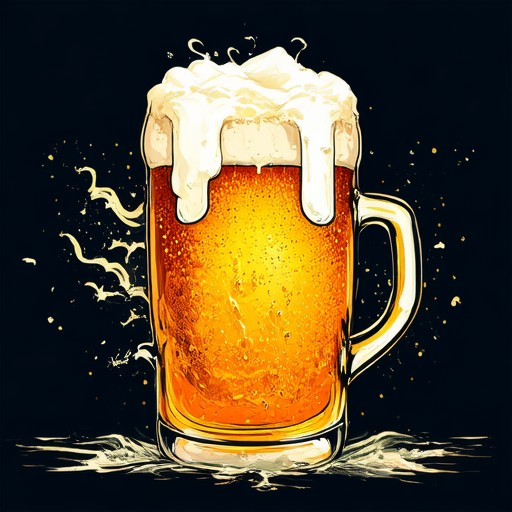
Factors Influencing Beer Sales
The sales of beer are influenced by a variety of factors, each playing a significant role in shaping the market. Here’s a breakdown of the primary elements:
- Price : Beer prices are highly sensitive to market changes. Price fluctuations can significantly impact sales volumes, with premium products often performing well during economic boom periods, while budget-friendly options may dominate during tough times.
- Availability : Consistent supply and adequate inventory are critical for meeting demand. Retailers with reliable distribution networks tend to perform better due to reduced stockouts and quicker access for consumers.
- Consumer Preferences : Trends in the market, such as the rise of craft beer, drive purchasing decisions. Companies that keep pace with evolving tastes often see sustained growth in sales.
- Competitive Landscape : The presence of competitors, including established breweries and emerging players, influences market dynamics. New entrants can disrupt existing markets, while established brands may respond with innovation.
- Promotional Activities : Effective marketing campaigns, discounts, and seasonal promotions can boost sales. These strategies help in capturing market share and driving trial among new customers.
- Social Media Impact : Platforms like Instagram and Twitter allow breweries to engage with consumers, showcase products, and participate in trending conversations, thereby influencing purchase decisions.
- Economic Conditions : Overall economic health plays a pivotal role. Strong job markets and rising disposable incomes correlate with increased beer consumption, while economic downturns may lead to reduced spending on non-essentials.
- Distribution Channels : Accessible and efficient distribution channels, including retail partnerships, bar placements, and e-commerce platforms, enhance sales potential.
- Seasonality : Sales often peak during festive seasons, holiday periods, and sports events where beer consumption is traditional.
By understanding these factors, businesses can tailor their strategies to align with market trends and customer needs, optimizing their sales performance in a dynamic environment.
Where Can I Buy Beer Near Me?
Beer enthusiasts looking for local options to purchase beer can explore several avenues. Here’s a structured guide to finding beer near you:
Best Places for Beer Sales Near Me
- Local Breweries and Craft Beer Shops: Many cities have craft breweries that offer fresh, locally-made beers. These establishments often host tastings and sell exclusive brews.
- Specialty Beer Stores: Independent liquor stores or beer-specific shops may carry a variety of domestic and international beers, including rare or limited editions.
- Supermarkets and Grocery Stores: Major chains like GroceryStore.com or local grocers frequently stock a selection of beers, including popular brands and seasonal offerings.
- Convenience Stores: Some convenience stores now feature small sections dedicated to beer, offering quick access to everyday favorites or specialty drinks.
- Online Platforms: Websites like The Goods On Tap connect users with local breweries and shops, simplifying the process of finding beer near you.
How to Find Beer Near You
To locate beer purchasing options nearby, consider these methods:
- Brewery directories: Platforms like The Goods On Tap provide comprehensive lists of breweries and beer shops in your area.
- Beer apps: Download apps like Google Maps or Yelp to search for beer-related businesses near you.
- Social media: Follow local breweries and beer shops on platforms like Instagram or Facebook to stay updated on promotions and availability.
- Online marketplaces: Websites like Amazon or Drizly allow you to order beer online for delivery or pickup.
Remember to check for age restrictions and local laws regarding beer purchases before visiting any establishment.
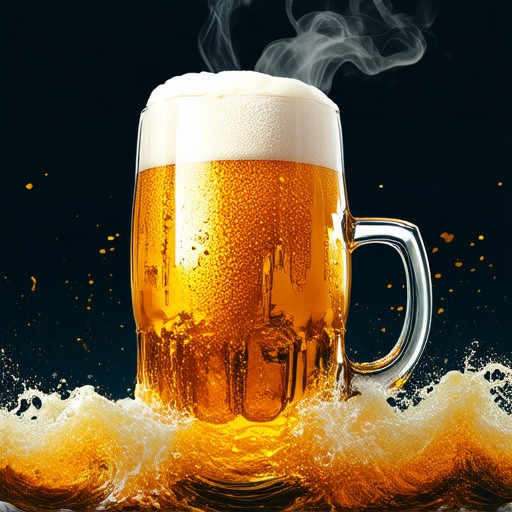
Strategies for Increasing Beer Sales
To effectively boost beer sales, consider implementing a multifaceted approach that leverages targeted marketing, customer engagement, and strategic partnerships. Here are some proven strategies:
1. Targeted Marketing Campaigns
- Demographics and Behavioral Insights : Utilize data analytics to tailor marketing efforts based on consumer preferences and purchasing habits. Focus on age groups, geographic locations, and lifestyle choices known to prefer craft beers.
- Branding and Messaging : Develop a strong brand identity that resonates with your target audience. Craft compelling narratives around your products, emphasizing unique selling points like flavor profiles or sustainable practices.
- Promotional Activities : Partner with local venues or host events such as tasting sessions or beer festivals to attract new customers and reinforce brand presence.
2. Offering Exclusive Deals and Discounts
- Loyalty Programs : Implement a rewards system where customers earn points for purchases, redeemable for discounts or free merchandise.
- Limited Edition Releases : Introduce special or seasonal brews that create urgency and drive sales. Highlight these releases through social media campaigns and partnerships with local businesses.
- Subscription Models : Offer subscription services for monthly beer deliveries, ensuring consistent revenue streams and repeat customers.
3. Emphasizing Premium Quality and Innovation
- Product Differentiation : Invest in quality improvement initiatives to enhance taste and production standards. Highlight these advancements in your marketing materials.
- Innovation in Packaging : Experiment with eco-friendly or visually appealing packaging designs to attract environmentally conscious consumers.
- Collaborations : Partner with local restaurants, bars, or chefs to create custom beer pairings, enhancing your brand’s versatility and appeal.
4. Leveraging Social Media and Digital Presence
- Engagement Strategy : Respond to customer inquiries and feedback promptly via social platforms to build trust and loyalty.
- Influencer Partnerships : Collaborate with popular food or drink influencers to reach new audiences and promote your products authentically.
- Interactive Content : Create contests or quizzes related to beer knowledge to increase user participation and brand visibility.
5. Building Strong Partnerships and Distribution Networks
- Bar and Restaurant Collaborations : Work with local establishments to feature your beers on their menus, offering discounts or special deals during peak hours.
- Retail Store Relationships : Maintain positive relationships with retailers to ensure consistent inventory availability and prominent shelf placement.
- Diversified Distribution Channels : Explore alternative sales channels such as grocery stores, convenience stores, and online marketplaces to broaden your reach.
6. Focusing on Sustainability and Brand Storytelling
- Eco-Friendly Practices : Highlight your commitment to environmental sustainability, such as reducing carbon footprints or using recyclable packaging.
- Storytelling : Share the story behind your brewery, focusing on passion for craftsmanship and community involvement to connect emotionally with customers.
7. Utilizing Data-Driven Insights
- Performance Tracking : Continuously monitor sales data and customer feedback to identify trends and adjust strategies accordingly.
- Customer Feedback Loops : Implement mechanisms for gathering and acting upon customer suggestions to improve offerings and satisfaction levels.
By combining these strategies, you can create a robust framework for sustained growth and success in the competitive craft beer market.
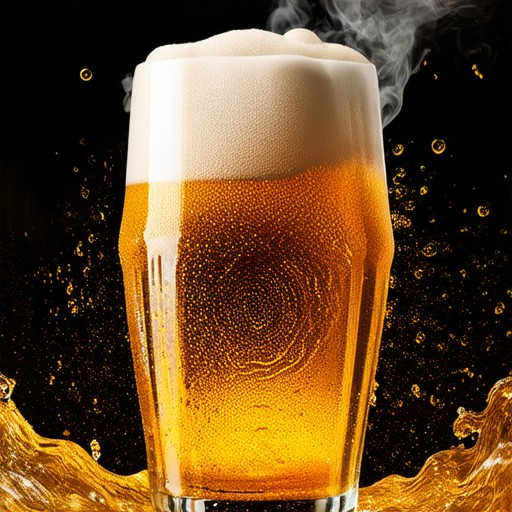
The Key Factors Influencing Beer Sales
Beer sales are influenced by a variety of factors that shape demand supply and market dynamics. Understanding these influences helps businesses strategize effectively to meet consumer demands and stay competitive.
- Price Points: The cost of beer significantly impacts sales volume. Price sensitivity among consumers plays a crucial role with budget-friendly options often performing well while premium products cater to affluent buyers.
- Product Availability: Consistency in supply chain management is vital. Limited editions or seasonal releases can drive demand but require careful planning to avoid stockouts or oversupply.
- Consumer Preferences: Trends such as health-consciousness have shifted preferences toward lower-alcohol or flavored beers. Craft beer continues to gain popularity due to its unique flavors and artisanal appeal.
- Seasonal Demand: Events like holidays festivals and weather conditions influence purchasing behavior. For example warmer months see increased demand for light beers while winter months boost sales of darker sturdier varieties.
- Marketing and Branding: Effective advertising campaigns and brand loyalty programs play a significant role in driving sales. Strong branding helps differentiate products in a crowded market.
- Competitor Activity: The actions of rivals including price wars promotions and new product launches impact overall market performance. Staying ahead of competitors requires continuous innovation and strategic positioning.
- Regulatory Environment: Government policies on alcohol production distribution and pricing can drastically affect the industry. Compliance with regulations ensures smooth operations while changes in laws can open new opportunities or challenges.
Understanding these factors allows businesses to adapt strategies align with market trends and consumer behavior ensuring sustained growth in the dynamic beer industry.
The Key Factors Influencing Beer Sales
Beer sales are influenced by a variety of factors that shape demand supply and market dynamics. Understanding these influences helps businesses strategize effectively to meet consumer demands and stay competitive.
- Price Points: The cost of beer significantly impacts sales volume. Price sensitivity among consumers plays a crucial role with budget-friendly options often performing well while premium products cater to affluent buyers.
- Product Availability: Consistency in supply chain management is vital. Limited editions or seasonal releases can drive demand but require careful planning to avoid stockouts or oversupply.
- Consumer Preferences: Trends such as health-consciousness have shifted preferences toward lower-alcohol or flavored beers. Craft beer continues to gain popularity due to its unique flavors and artisanal appeal.
- Seasonal Demand: Events like holidays festivals and weather conditions influence purchasing behavior. For example warmer months see increased demand for light beers while winter months boost sales of darker sturdier varieties.
- Marketing and Branding: Effective advertising campaigns and brand loyalty programs play a significant role in driving sales. Strong branding helps differentiate products in a crowded market.
- Competitor Activity: The actions of rivals including price wars promotions and new product launches impact overall market performance. Staying ahead of competitors requires continuous innovation and strategic positioning.
- Regulatory Environment: Government policies on alcohol production distribution and pricing can drastically affect the industry. Compliance with regulations ensures smooth operations while changes in laws can open new opportunities or challenges.
Understanding these factors allows businesses to adapt strategies align with market trends and consumer behavior ensuring sustained growth in the dynamic beer industry.
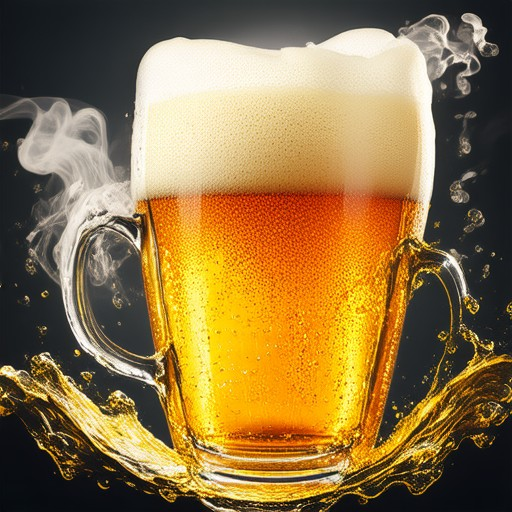
Current Trends in U.S. Beer Sales
The U.S. beer market continues to evolve rapidly, driven by shifting consumer preferences and the rise of innovative brewing techniques. Here are the key trends shaping the industry in 2025:
- Craft Beer Dominance: Craft beer remains the fastest-growing segment of the U.S. beer market, with annual growth exceeding 7%. Small breweries are experimenting with unique flavors, barrel-aged beers, and limited-edition releases to attract discerning consumers.
- Hard Seltzer Surge: Hard seltzers, once a niche product, have become a major player in the market. Their popularity stems from their sessionable alcohol content, refreshing taste, and appeal to health-conscious consumers.
- Non-Alcoholic Beer Adoption: Brewerias are increasingly investing in non-alcoholic beer production. Low-calorie, low-alcohol options are gaining traction among younger audiences and fitness-focused consumers.
- E-Commerce Growth: Online beer sales have seen exponential growth, particularly through platforms like The Goods On Tap. Direct-to-consumer models allow breweries to reach customers beyond traditional retail channels.
- Competitive Landscape: The battle between craft and mainstream breweries intensifies. Established players like Anheuser-Busch InBev are investing heavily in innovation to retain market share against rising craft brewers.
- Sustainability Focus: Many breweries are adopting eco-friendly practices, such as reducing water usage and carbon footprints. Consumers are increasingly drawn to brands that prioritize environmental responsibility.
- Trends in Flavor Profiles: Breweries are incorporating unconventional ingredients like hops, mangoes, and guava into their beers. This shift reflects consumer demand for bold and adventurous flavor experiences.
- Packaging Innovations: Canned beers and sustainable packaging options are becoming standard. Brands are leveraging eco-friendly materials to appeal to environmentally conscious consumers.
For more detailed insights into these trends and to explore the latest beer styles and industry developments, visit The Goods On Tap .
Conclusion
The U.S. beer industry is characterized by rapid change, with craft breweries leading the charge in innovation and consumer engagement. Staying informed about emerging trends and exploring diverse beer styles is essential for anyone passionate about beer culture.

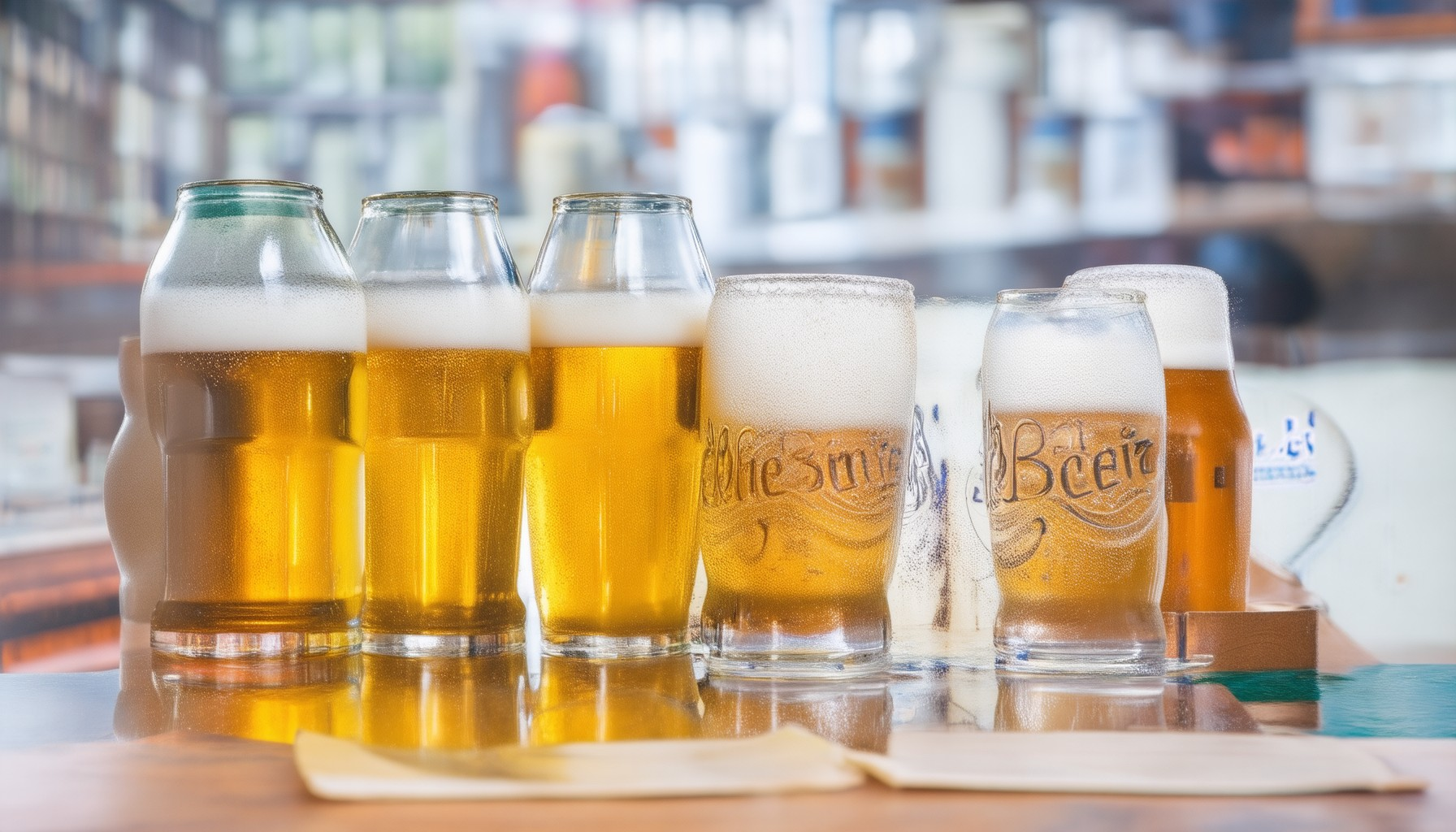
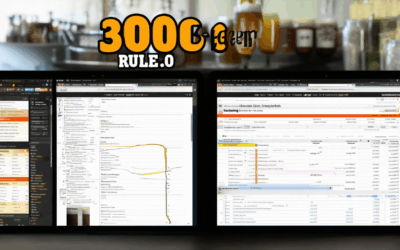
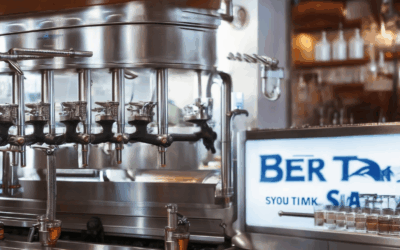
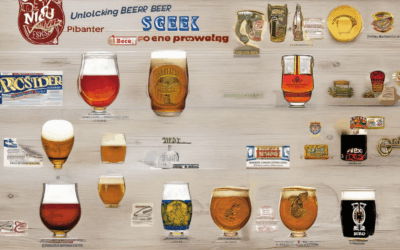
0 Comments